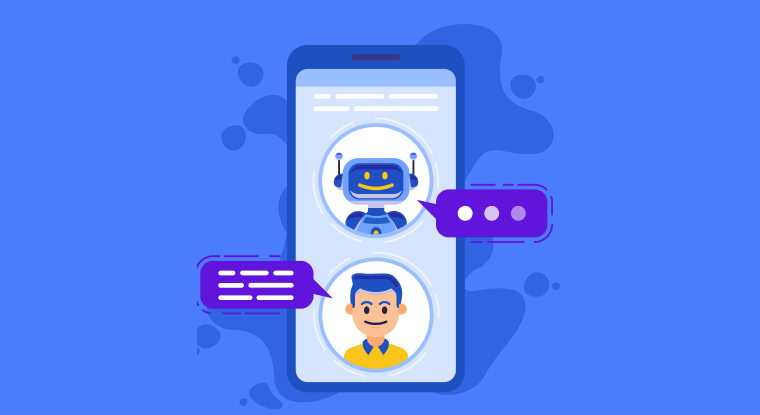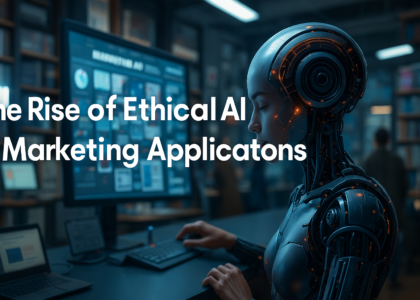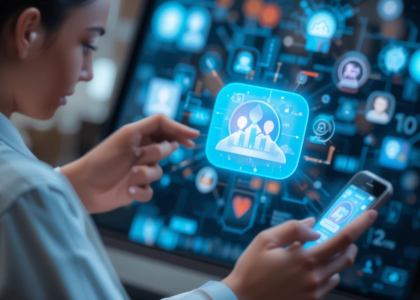Introduction to Hyper-Personalized Marketing
In today’s digital landscape, consumers expect more than generic advertisements or broad marketing campaigns. Hyper-personalized marketing is an advanced form of personalization that uses real-time data and cutting-edge technology to deliver content, products, and experiences tailored to each individual user. As consumer expectations evolve, so does the need for brands to deliver marketing experiences that resonate deeply with their audience.
The concept of personalization in marketing has evolved from simply including a customer’s name in an email to dynamically altering content based on behavior, preferences, location, and real-time interactions. This evolution is largely driven by artificial intelligence (AI), enabling marketers to go beyond traditional segmentation into a realm of one-to-one marketing at scale.
What is AI-Driven Marketing?
AI-driven marketing refers to the use of artificial intelligence technologies—such as machine learning, natural language processing (NLP), and predictive analytics—to automate decision-making, optimize campaigns, and enhance customer engagement.
Unlike traditional personalization, which often relies on pre-defined customer segments and manual input, AI-driven personalization adapts in real-time, learning from each interaction and continuously refining the customer journey. This results in a significantly more relevant and compelling experience for each user.
The Mechanics of Hyper-Personalization with AI
Hyper-personalization hinges on AI’s ability to collect and analyze large volumes of real-time data. AI algorithms process data from various sources, including web browsing behavior, purchase history, and social media activity, to understand user intent and preferences.
By tracking customer behavior across touchpoints, AI segments audiences dynamically and predicts what content or product will most likely resonate. Furthermore, AI can generate dynamic content—like emails, product recommendations, or web pages—tailored uniquely to each user.

Key AI Tools Powering Hyper-Personalization
Several AI tools are at the forefront of enabling hyper-personalized experiences:
- Recommendation Engines: These use collaborative filtering and content-based algorithms to suggest products or content users are likely to be interested in, based on their behavior or similar users’ behaviors.
- Chatbots and Virtual Assistants: AI-powered bots offer 24/7 customer support and engagement, using NLP to understand and respond to queries in a human-like manner, while learning from past conversations.
- Email Marketing Automation Tools: AI personalizes email content, subject lines, send times, and segmentation with precision, significantly improving open and conversion rates.
Benefits of Hyper-Personalized Marketing with AI
Implementing AI-powered hyper-personalization offers several measurable benefits:
- Increased Customer Engagement: Personalized interactions increase the relevance and appeal of messages, encouraging users to spend more time with your brand.
- Enhanced Conversion Rates and ROI: Tailored marketing campaigns lead to higher click-through and conversion rates, which translates into better returns on investment.
- Improved Customer Loyalty and Retention: When customers feel understood and valued, they’re more likely to stay loyal and advocate for the brand.

Real-World Applications and Case Studies
AI is already transforming industries with successful hyper-personalized strategies:
- Retail and E-Commerce: Brands like Amazon and Netflix use sophisticated AI models to predict and recommend products or content, accounting for a significant portion of their revenue.
- Digital Advertising: Platforms like Google and Facebook leverage AI to deliver targeted ads based on user interests, browsing behavior, and past interactions.
- Case Study – Sephora: Sephora’s AI chatbot and recommendation engine provide users with personalized beauty tips and product recommendations, enhancing the customer journey and boosting sales.
Ethical Considerations and Data Privacy
As marketers delve deeper into personalization, data ethics and consumer privacy become paramount. Striking a balance between offering personalized experiences and respecting data boundaries is critical.
Regulatory frameworks like GDPR and CCPA have set clear rules on data collection and usage, requiring transparency and consent. Marketers must ensure that AI systems are designed to use data responsibly, communicate clearly about how customer data is used, and provide opt-out options.

Challenges in Implementing AI for Personalization
Despite the benefits, implementing AI comes with its set of challenges:
- Data Integration and Quality: Inconsistent or siloed data limits AI’s effectiveness. Unified data platforms are essential for success.
- Technical and Operational Limitations: AI solutions require skilled personnel, investment, and infrastructure that may not be readily available to all organizations.
- Organizational Resistance: Shifting to AI-driven marketing requires a cultural change and buy-in from all levels, which can be a major hurdle.
The Future of AI in Personalized Marketing
AI continues to evolve rapidly, and its future in marketing is promising:
- Predictive Marketing Trends: AI will increasingly predict future behavior, allowing marketers to act proactively rather than reactively.
- Integration with Emerging Tech: Combining AI with IoT, AR, and VR will open up new channels and dimensions for personalized marketing.
- Emotional AI: Future AI tools may interpret user emotions through tone, facial expression, or behavior, enabling emotionally intelligent marketing.

How to Start Integrating AI in Your Marketing Strategy
For businesses looking to get started:
- Assess Current Capabilities: Understand your current data infrastructure, team readiness, and marketing goals.
- Select the Right Tools: Choose AI platforms that align with your business size, industry, and objectives.
- Implement in Phases: Start small, test results, and scale gradually to avoid overwhelming your team and resources.

Metrics to Evaluate AI-Driven Personalization Success
To determine the effectiveness of AI efforts, focus on metrics such as:
- Engagement Rates: Open rates, click-through rates, and session durations.
- Conversion Metrics: Purchase frequency, average order value, and customer lifetime value.
- A/B Testing: Test different AI-driven approaches to find what works best and optimize accordingly.

Industry Insights and Expert Opinions
Marketing experts agree that hyper-personalization is no longer optional. According to a McKinsey report, companies that extensively use personalization can achieve 5–15% increases in revenue and 10–30% increases in marketing efficiency.
Thought leaders also emphasize the need for ethical AI use, transparent data practices, and continuous testing to ensure long-term success.
Conclusion
AI is not just a technological advantage—it’s a necessity for delivering exceptional customer experiences in the digital age. Hyper-personalized marketing, powered by AI, enables businesses to connect with consumers more deeply, increase revenue, and stand out in a competitive marketplace.
The future belongs to brands that can learn faster, personalize deeper, and adapt quicker—and AI is the key to unlocking that potential.





